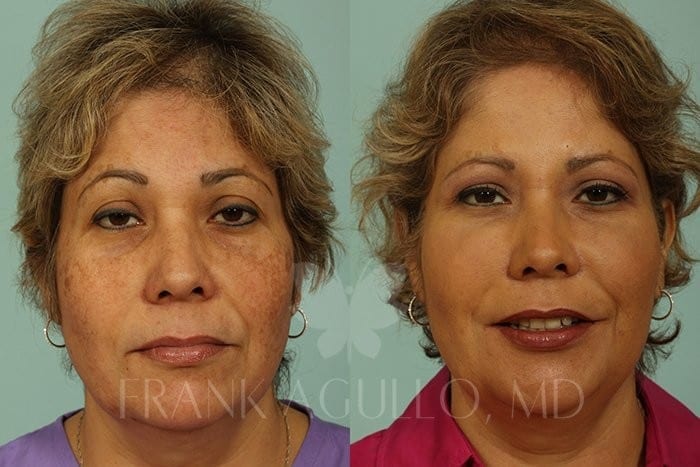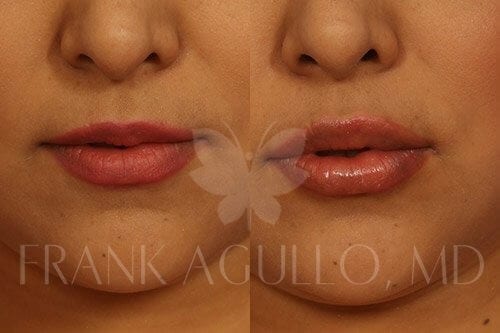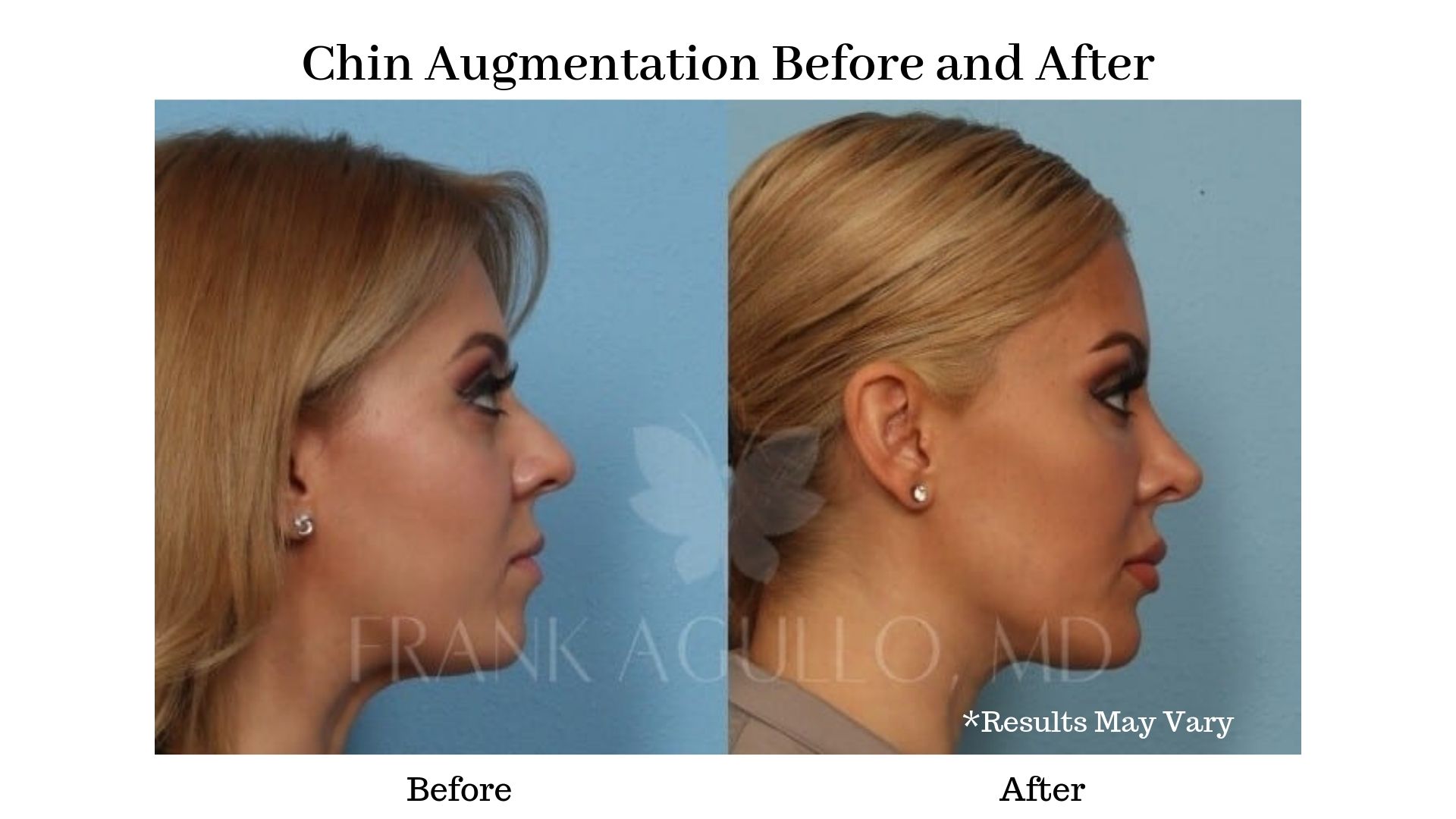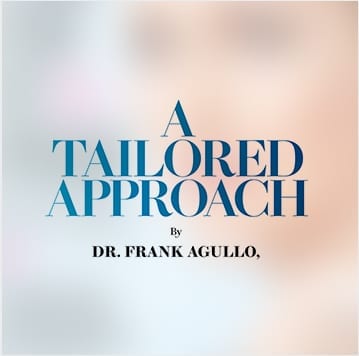September 18, 2019 | Facial Contours
Defined facial contours are something that many men and women desire. Facial definition symbolizes youth, health, and beauty, so it can prove frustrating when facial volume is lost. Unfortunately, this is a natural part of the aging process and, therefore, is usually unavoidable. Since it is so hard to prevent the loss of facial volume, cosmetic enhancements can combat its effects and restore or create highly desirable facial lines and shapes.
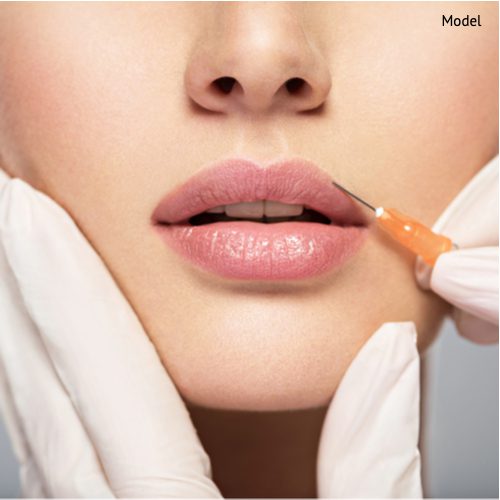
What Causes You To Lose Facial Volume?
Your youthful facial contour is most affected by the loss of facial volume. When you are young, facial fat can be found all across your face: from your cheeks to your lips to beneath your eyes. As you age, and additional factors like sun damage, environmental factors, smoking, and excessive drinking set in, this fat begins to break down and disappear, causing the development of hollowed facial features and thin lips. Volume is also lost due to the reduction of collagen, elastin, and hyaluronic acid. These three substances are the building blocks of your skin and tissue—responsible for the tissues’ strength, structure, elasticity, flexibility, and moisture levels—and sadly, their production slows down as you age. This causes both the formation of unwanted lines and wrinkles as well as the reduction of facial fullness.
Facial contouring can restore fullness that has been lost or enhance areas of the face that may have never had adequate volume or shape.
How Can You Restore and Enhance Facial Contours?
The restoration or creation of defined facial contours can be performed through non-surgical or surgical means.
Fat Injections
Fat injections are a common way to correct volume loss or create more sculpted contours. Fat injections are performed through a two-step process. First, unwanted fat is taken from areas of the body that have an excess, such as the abdomen, thighs, or buttocks. The fat is then purified and sent through a centrifuge to ensure that the highest quality fat and stem cells remain. The solution is then injected and massaged into various areas of the face that could use additional volume.
Fat injections are desirable for many reasons. They are minimally-invasive, safe, long-lasting, and beneficial for any facial region, such as the cheeks, lips, or beneath the eyes. The transferred fat cells will replace those that have been lost, and the transferred stem cells will work to stimulate the production of new collagen, which will prolong the quality of your results.
Patients may require a series of fat injections to achieve the desired level of enhancement since only approximately half of the fat will survive the transfer. However, most patients will see long-lasting improvement of their facial contours after a single session.
Lip Augmentation
The lips are one of the most common areas for patients to desire enhancement. Thin lips and fine lines that develop around the mouth contribute to a prematurely aged appearance and a lackluster pout. The volume of the lips can be enhanced in a few different ways, such as fat injections, dermal fillers, or lip implants.
Lip fillers: Dermal fillers, such as JUVÉDERM® and Restylane®, can add plumpness and fullness to naturally thin or thinning lips. These fillers temporarily add volume and, as they are synthetic forms of hyaluronic acid, attract moisture to the area for lasting results. This treatment is performed in a matter of minutes without the need for incisions or anesthesia—a local numbing agent is all that is required—and can restore lip volume for several months. Lip injections with dermal fillers are tailored to the patient and can be repeated as often as necessary to maintain results.
Lip implants: While lip implants are not as popular for lip augmentation, they can provide the longest-lasting augmentation results. Lip implants, with either PermaLip or AlloDerm implants, are shaped silicone implants that permanently augment the shape of the lips. While they are long-lasting, implants are not often preferred since dermal fillers offer natural-looking results with a less invasive technique.
What Can I Expect for My Recovery?
Neither fat or dermal filler injections require general anesthesia, so there are no anesthesia-related risks or complications. Patients who receive fat injections can expect bruising and swelling in both the harvest and injection sites; however, this will continue to subside over the following days and weeks as the fat cells settle into their new location. Dermal fillers may result in some minor swelling that can be remedied by cold compresses.
Am I a Candidate?
Candidates for fat or dermal filler injections experience dissatisfaction with the thin lines and contours of their face. This thinness may be the result of aging or genetics. Candidates for any of these treatments should be in good overall health and have realistic expectations of their results.
What are my options?
Many patients choose to define their facial contours by using fat injections or dermal fillers. These treatments restore age-related volume loss or augment genetically thin features. While these treatments do alter the overall shape of the face, they are more often used to counteract the negative effects of aging.
Facial contouring is not only designed for the reversal of age-related skin laxity. These procedures can also permanently alter the underlying structures of the face.
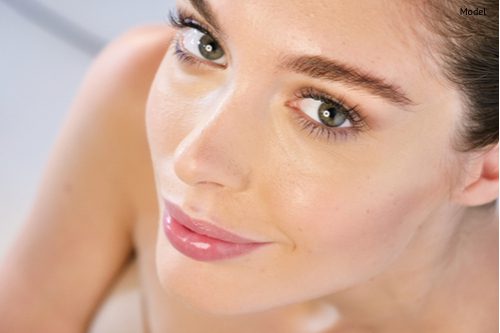
The chin and cheeks are two of the most “shapely” features on your face. Their size, roundness, and projection (or lack thereof) change your facial appearance more than any fine line or wrinkle ever could. Many patients are interested in physically altering the shape of these two features to enhance facial symmetry and balance. Chin augmentation and buccal fat pad removal are performed to create angular, sculpted contours for any adult patient.
How Can You Strengthen Your Jawline?
Nothing can impact the overall shape of your face like a weak jawline. Some patients have a naturally small or receded jaw, which creates an unbalanced facial appearance because the upper portion of the face seems to be stronger than the lower part. Chin augmentation uses solid silicone implants to create a stronger and more noticeable projection of the chin. The implants are inserted through incisions made inside the mouth and are placed over the jaw bone. Chin implants come in a variety of sizes and shapes, so you can find one to balance out your facial features perfectly.
When Is Reduction Necessary?
Not every person looking to define their facial contours is looking to increase their facial volume. Some patients wish to define their features by reducing the size of their buccal fat pads. Buccal fat is the technical term for chubby cheeks. While this feature is loved when it graces the face of a child, it is not quite as appreciated when you become an adult. Buccal fat pad removal instantly slims and sculpts your facial contours. This surgical procedure is accomplished through an incision made on the inside of the mouth. The fat pad underneath the cheek muscle is then removed, giving the midface a sleeker, more angular appearance.
What Can I Expect for My Recovery?
Since chin augmentation and buccal fat pad removal are both surgical procedures, there is an element of recovery involved. Fortunately, the recoveries for both procedures are straightforward and manageable with a prescription or over-the-counter pain medication, and as incisions are made inside the mouth, there is no visible post-treatment scarring. Most patients take a few days to rest and recover; however, many are able to return to their routines before they know it.
Am I a Candidate?
Candidates for facial contouring are not only those who are unsatisfied with their aging features—some are dissatisfied with their facial shape. Candidates for these procedures are healthy adults that are hoping to see angular lines and facial symmetry when they look in the mirror. Facial contouring is a versatile and highly customizable treatment that can help you achieve your aesthetic goals.
For more information on chin augmentation or buccal fat pad removal, contact Dr. Frank Agullo by calling (915) 590-7900 or by filling out our online contact form.

